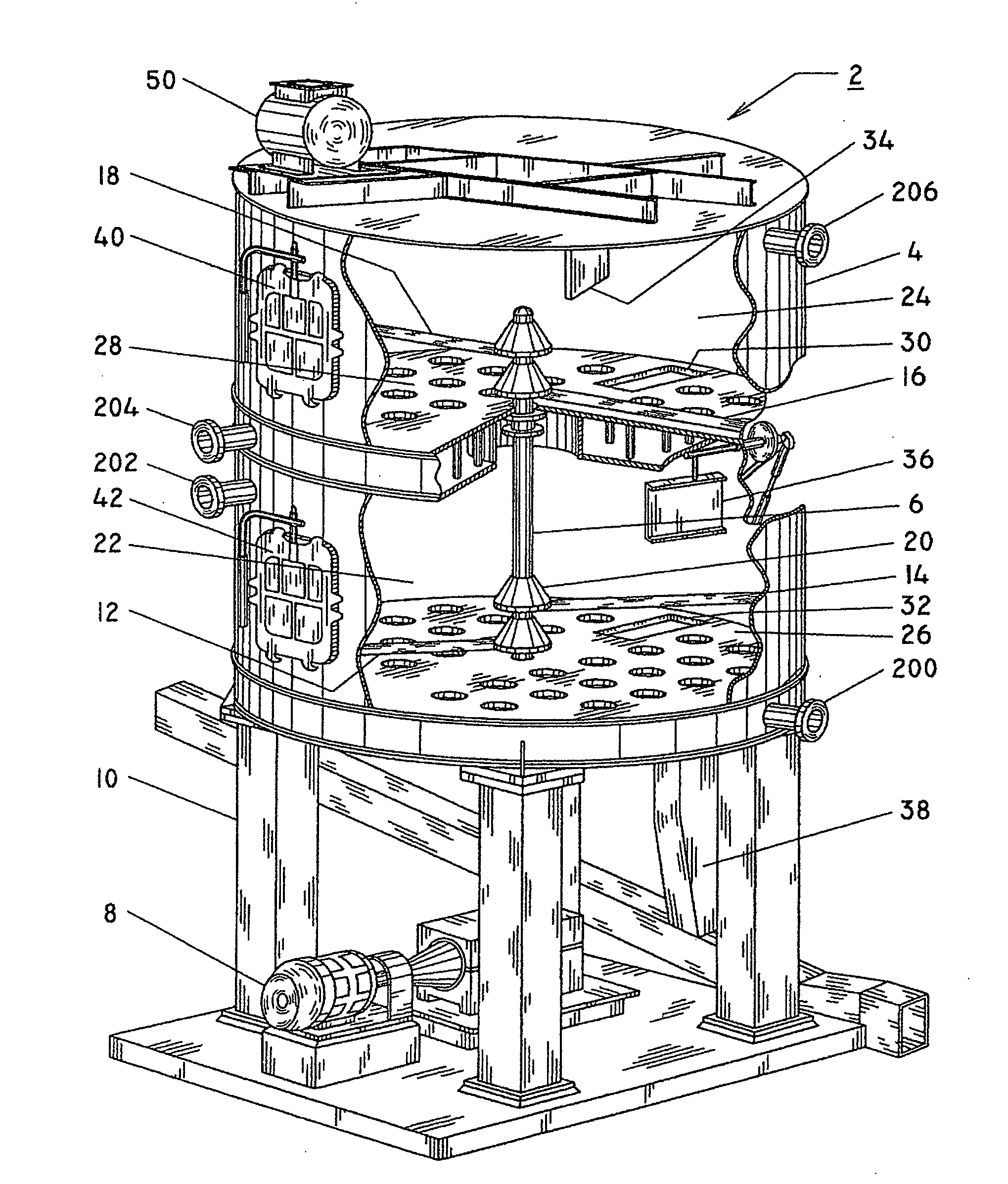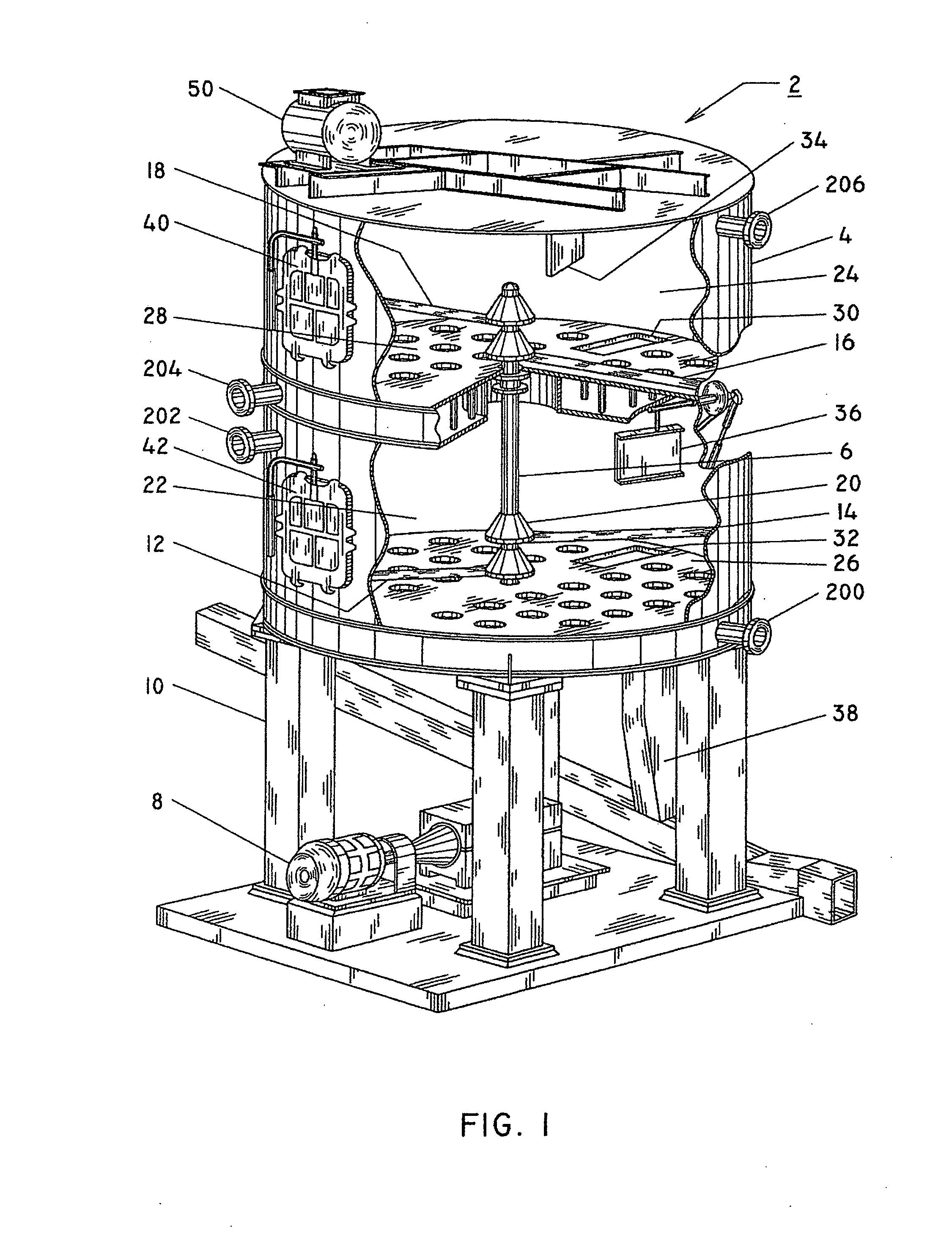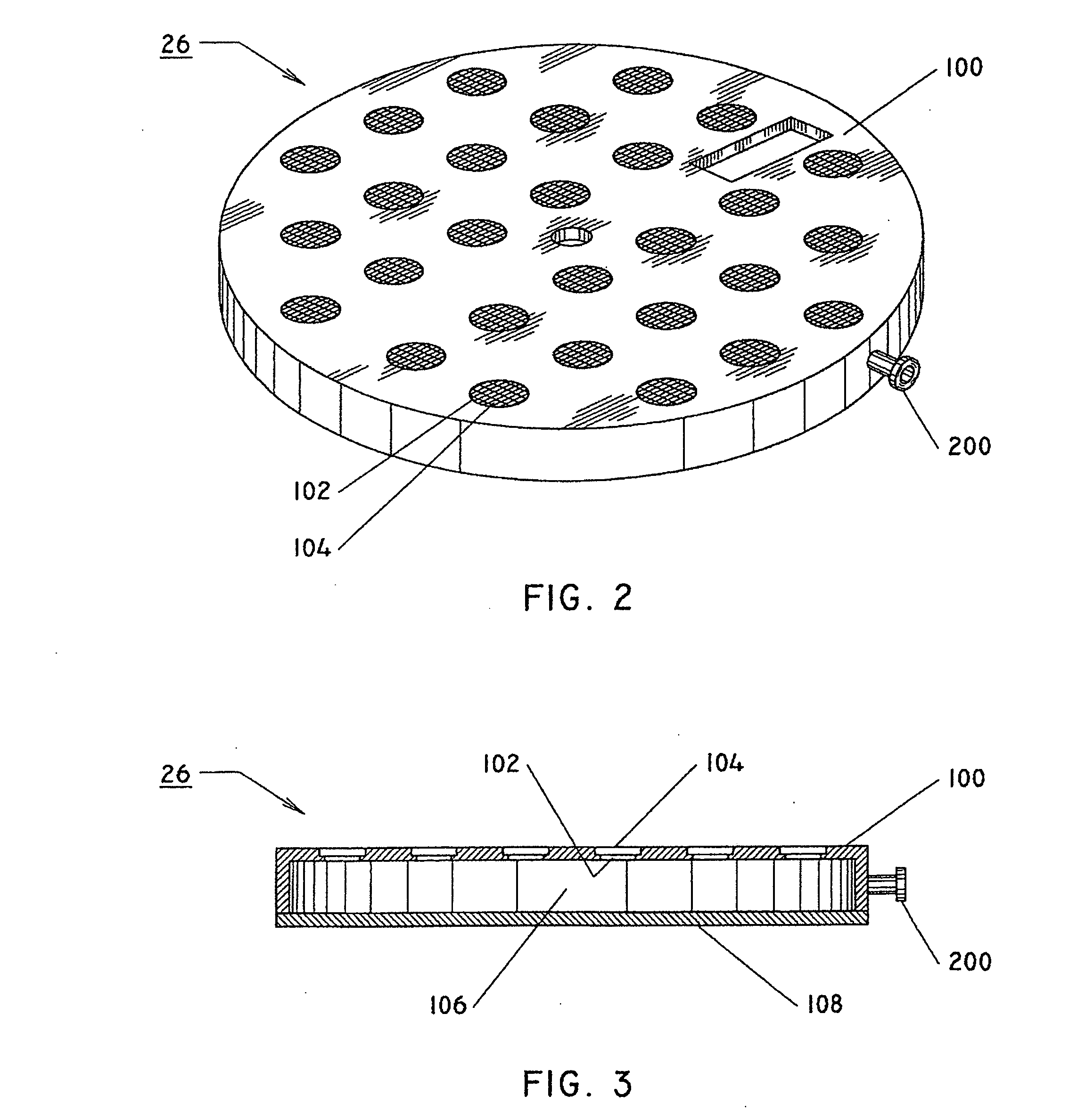Meal dryer/cooler
a technology of meal dryer and cooler, which is applied in the direction of drying machines, lighting and heating apparatus, and combination processes to achieve the effects of reducing the moisture content of meal, high electrical power demand, and thermal efficiency
- Summary
- Abstract
- Description
- Claims
- Application Information
AI Technical Summary
Benefits of technology
Problems solved by technology
Method used
Image
Examples
Embodiment Construction
[0015]Turning first to FIG. 1, there is shown a meal dryer / cooler 2 in accordance with the invention. The meal dryer / cooler comprises a generally cylindrical housing 4 with a vertical shaft 6 extending through most of the housing and being generally coaxial therewith. The shaft is rotated by means of a motor 8 coupled thereto via conventional speed reducers, couplings and bearing members.
[0016]The assembly is supported by a plurality of supports 10. The vertical shaft 6 comprises a plurality of hub members 20 that carry radially extending stirrer arms 12, 14, 16, 18 which aid in stirring and moving the meal around the surface of the trays. As shown, a cooling zone or chamber 22 is provided between the trays 26 and 28 with a drying chamber 24 being defined between the tray 28 and the top portion of housing 4. Discharge gates 30, 32 are provided through the trays and feed the meal material via gravity discharge therethrough from the drying chamber 24 into the cooling chamber 22. After...
PUM
 Login to View More
Login to View More Abstract
Description
Claims
Application Information
 Login to View More
Login to View More - R&D
- Intellectual Property
- Life Sciences
- Materials
- Tech Scout
- Unparalleled Data Quality
- Higher Quality Content
- 60% Fewer Hallucinations
Browse by: Latest US Patents, China's latest patents, Technical Efficacy Thesaurus, Application Domain, Technology Topic, Popular Technical Reports.
© 2025 PatSnap. All rights reserved.Legal|Privacy policy|Modern Slavery Act Transparency Statement|Sitemap|About US| Contact US: help@patsnap.com



